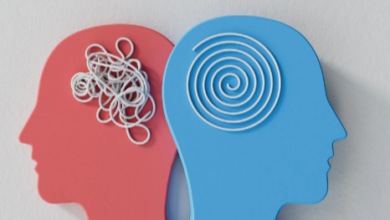Movement is Medicine: Rehabilitation Strategies in Modern Chiropractic Practice

Movement is a cornerstone of human health, and its importance cannot be overstated. Whether it’s lifting a child, walking down the street, or simply bending down to pick something up, our ability to move freely and without pain impacts every aspect of our lives. When movement is restricted or painful, it can lead to a cascade of physical and emotional challenges, from decreased mobility to chronic pain, stress, and frustration.
In modern chiropractic practice, the philosophy of “movement is medicine” takes center stage in rehabilitation strategies. Chiropractic care is no longer just about spinal adjustments. It’s a dynamic, holistic approach that integrates movement-based therapies, rehabilitation exercises, and lifestyle adjustments to help patients recover from injury, prevent future issues, and restore optimal function.
In this article, we will explore how movement-based rehabilitation strategies are used in modern chiropractic care and how Tampa’s movement restoration specialists are making a significant impact on patient recovery and long-term wellness.
The Link Between Movement and Healing
Movement is essential for healing because it helps the body maintain flexibility, strength, and proper alignment. When we move, we stimulate blood circulation, engage the muscles, and allow our joints and tissues to function as they should. Proper movement supports the healing process by:
- Improving circulation: Movement encourages blood flow, which is essential for the delivery of nutrients and oxygen to tissues, aiding in repair and recovery.
- Reducing stiffness: Movement keeps muscles, joints, and tissues from becoming stiff, which can limit mobility and exacerbate pain.
- Enhancing flexibility: Movement helps maintain or increase flexibility, which in turn supports joint mobility and prevents further injury.
- Strengthening muscles: Regular movement strengthens muscles, which provides better support for the spine and joints, reducing the risk of injury.
When movement is restricted due to injury or misalignment, the body’s ability to heal and function optimally is compromised. Chiropractic care integrates movement into rehabilitation plans to restore function, relieve pain, and promote long-term health.
See also: The Ultimate Guide to Self-Employed Health Coverage
Modern Chiropractic Approaches to Movement-Based Rehabilitation
In the past, chiropractic care primarily focused on spinal adjustments. While these adjustments remain an essential component of treatment, modern chiropractic practices emphasize a more comprehensive approach that incorporates rehabilitation exercises and movement strategies.
- Spinal Manipulation and Mobilization
Spinal manipulation is still a foundational technique in chiropractic care, aimed at correcting spinal misalignments (subluxations) that may be affecting nerve function and mobility. Chiropractic adjustments help improve spinal alignment, alleviate pain, and restore range of motion. After an adjustment, chiropractic specialists often prescribe specific movements or exercises to further enhance the healing process and prevent re-injury. - Therapeutic Exercises
Rehabilitation exercises are tailored to each patient’s condition, focusing on strengthening the muscles, improving flexibility, and enhancing joint mobility. These exercises might include:
- Strengthening exercises: These are designed to build muscle strength, especially in the core, back, and hips, which provide stability and support to the spine and joints.
- Stretching routines: Stretching helps improve flexibility and range of motion, reducing the likelihood of stiffness and joint restrictions.
- Stabilization exercises: These exercises aim to improve posture and alignment, addressing muscular imbalances that could contribute to pain and discomfort.
- Postural correction: Specific movements or exercises that address poor posture, which can lead to chronic pain and discomfort, especially in the neck, back, and shoulders.
- Strengthening exercises: These are designed to build muscle strength, especially in the core, back, and hips, which provide stability and support to the spine and joints.
Therapeutic exercises are not just limited to passive movements. They actively engage the patient and are a vital part of recovery and movement restoration. Tampa’s chiropractic specialists often create individualized rehabilitation plans that incorporate movement techniques to optimize healing and ensure long-term results.
- Functional Movement Training
Functional movement training focuses on improving the body’s ability to perform everyday activities with greater ease and less risk of injury. This type of training helps individuals regain normal movement patterns after an injury or surgery, and it also serves as a preventive measure against future injuries.
Chiropractors in Tampa Bay often integrate functional movement techniques, such as balance exercises, posture correction, and gait training, to improve mobility and restore proper movement mechanics. This training ensures that patients not only recover from their current injury but also reduce the risk of future physical problems. - Movement Screening and Assessment
Before beginning a rehabilitation program, many chiropractors conduct a detailed movement screen to assess a patient’s physical capabilities. This assessment identifies areas of weakness, imbalance, and dysfunction that may be contributing to pain or limiting mobility. By analyzing the way the body moves, chiropractors can design a rehabilitation program that targets specific problem areas and enhances overall function.
In addition to spinal health, this assessment looks at other aspects of movement, including joint flexibility, muscle strength, and balance, allowing chiropractors to treat the patient holistically. - Posture and Body Mechanics Education
Poor posture and improper body mechanics are major contributors to pain and injury. Chiropractic care emphasizes education on maintaining good posture during everyday activities such as sitting, standing, lifting, and bending. Tampa’s movement restoration specialists focus on teaching patients how to align their bodies properly and move efficiently to avoid strain on muscles, joints, and the spine.
By addressing posture and body mechanics, chiropractors help patients not only recover from pain but also prevent future injuries caused by incorrect movement patterns.
The Role of Movement in Pain Management and Injury Prevention
One of the most significant benefits of movement-based rehabilitation is its ability to manage pain and prevent injuries. When the body moves properly, it is less likely to experience pain, stiffness, or discomfort. By focusing on rehabilitation exercises and functional movement, chiropractic care can:
- Manage chronic pain: For those with chronic conditions like arthritis, sciatica, or herniated discs, movement is essential for managing pain and improving quality of life.
- Prevent future injuries: Strengthening muscles, improving flexibility, and correcting posture can help prevent injuries, particularly for athletes or individuals with physically demanding jobs.
- Promote healing after injury: After an injury, movement-based rehabilitation aids in the recovery process, helping the injured tissues heal faster while preventing further complications.
- Restore movement after surgery: Chiropractic care can help restore normal movement patterns following surgery or a major injury by using a combination of manual therapies and rehabilitative exercises.
Tampa’s Movement Restoration Specialists: A Holistic Approach to Healing
In Tampa Bay, chiropractic professionals are leading the charge in utilizing movement-based rehabilitation strategies to help patients recover from pain, injury, and dysfunction. Tampa’s movement restoration specialists offer personalized rehabilitation programs that are designed to help individuals regain optimal function through a combination of spinal care, therapeutic exercises, functional training, and lifestyle modifications.
Whether you are recovering from a car accident, managing chronic pain, or simply want to improve your overall movement and mobility, Tampa’s chiropractic experts can design a plan that is tailored to your needs. These specialists take a whole-body approach, focusing not just on the spine, but on your overall movement patterns, strength, and flexibility to ensure comprehensive recovery and long-term wellness.
Conclusion
In modern chiropractic care, the belief that “movement is medicine” is at the heart of effective rehabilitation strategies. By combining spinal adjustments with movement-based therapies, chiropractic professionals help patients not only recover from injury but also restore optimal movement patterns, prevent future injuries, and improve overall quality of life.
Tampa’s movement restoration specialists are at the forefront of this holistic approach, offering tailored rehabilitation programs that address both the body’s structural and functional needs. If you’re struggling with pain, limited mobility, or poor posture, chiropractic care in Tampa can help you regain control of your movement and enjoy a healthier, more active life.
By integrating movement into chiropractic care, patients can experience lasting relief, enhanced function, and a full return to their daily activities—because when the body moves well, it heals well.




